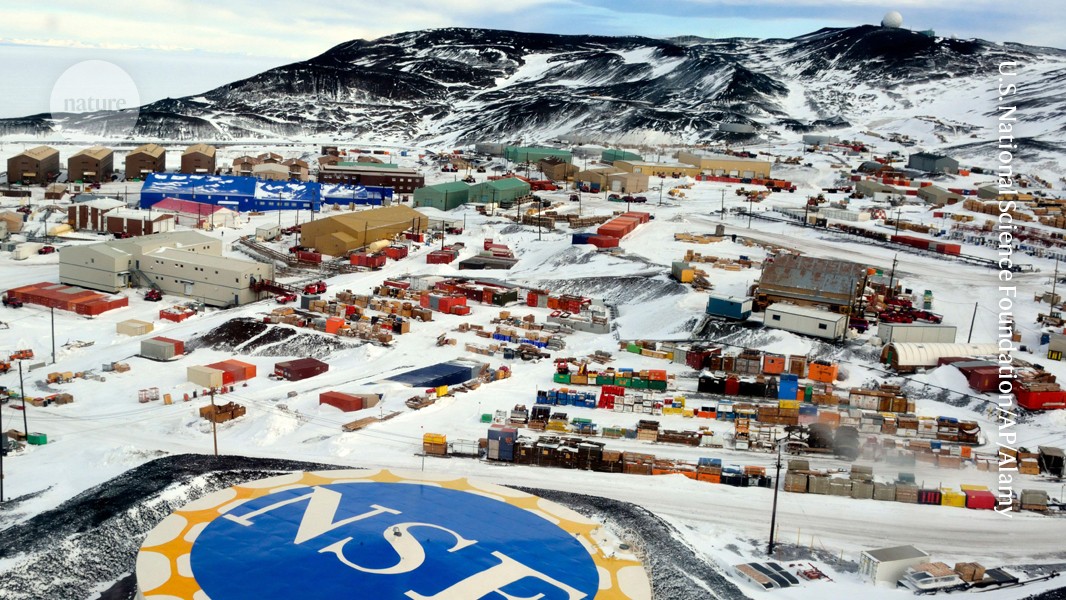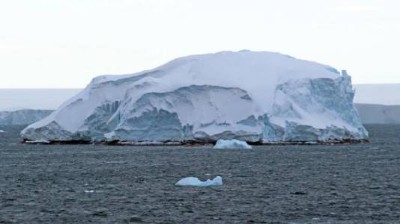
McMurdo Station in Antarctica, which is operated by the US National Science Foundation, has been in need of repairs and upgrades for decades.Credit: U.S. National Science Foundation/Associated Press/Alamy
US President Donald Trump’s massive government cuts are threatening the nation’s leadership at the ends of the Earth, say scientists who work in Antarctica.
By presidential directive stretching back decades, the United States maintains three research stations in Antarctica. Each summer, scientists descend on them keen to make discoveries, and each winter small crews maintain the bases as a key national presence. US research in Antarctica has yielded groundbreaking insights into our planet, and the research stations aren’t just science hubs. They are also a proxy for geopolitical power; without them, the United States might cede soft power in Antarctica to other nations.
Trump’s bid for Greenland threatens to destabilize Arctic research
Much of that research and clout is now in danger, many scientists say. US Antarctic research is run by the National Science Foundation (NSF), which Trump has threatened with drastic budget and staff cuts. He has already withdrawn construction funds previously set aside to update the biggest US Antarctic station, and his administration has fired and — under court order — rehired several crucial programme officers for Antarctic research.
Uncertainty about what might happen next is undermining plans for research from penguin surveys to studies of the Universe. “People are looking over their shoulders,” says Sridhar Anandakrishnan, a glaciologist at Pennsylvania State University in University Park. “They don’t know whether the science that they have been doing for decades is of interest to NSF anymore.”
“What’s really unhelpful is the timing,” says Gary Wilson, a geoscientist at the University of Waikato in Hamilton, New Zealand, and president of the international Scientific Committee on Antarctic Research. “The global issues we face are urgent.”
Urgent work on the ice
Of all the science done in Antarctica, none is more urgent than that seeking to understand the continent’s melting ice, which is fuelling sea-level rise that will displace millions of people in the coming decades. The NSF has supported many projects to study ice loss, coordinating the complex logistics of getting people and equipment to remote areas using icebreakers, ski-equipped planes and other polar infrastructure.
New Antarctic island spotted as mammoth glacier retreats
Such work has included a US–UK project allotted US$25 million over five years to study how quickly Antarctica’s Thwaites Glacier is losing ice. “That’s a very small amount of money relative to the cost of not understanding what’s happening,” says Brent Minchew, a geophysicist at the Massachusetts Institute of Technology in Cambridge who studies glacier melting.
In one of the agency’s biggest investments in facilities, the NSF’s Office of Polar Programs spends more than US$200 million each year to maintain civilian infrastructure at the three US bases: the small Palmer Station on an island off the Antarctic peninsula, the large McMurdo Station near the Ross ice shelf, and the remote Amundsen–Scott South Pole Station.
Even before Trump took office in January, the NSF had been struggling to fund Antarctic work. Stagnant budgets led to programme cutbacks in the late 2010s, and COVID-19 derailed years of fieldwork. On top of that, the NSF has been trying to rebuild the crumbling infrastructure at McMurdo, but has not had enough money to do so.
Fieldwork fears
But last month, Trump cancelled the NSF’s construction budget for the current fiscal year ― which includes work on the McMurdo rebuild ― overriding Congress’s spending priorities. Scientists fear that he will also seek to slash the agency’s budget for the fiscal year 2026: one preliminary document leaked to The Washington Post suggested a 28% cut. Trump will release his budget request in the next few months, although the agency’s final budget for next year, to be decided by Congress, could differ substantially from that request.
If support for the Antarctic programme is slashed, then the NSF might not be able to fund substantial field research for at least a couple of years. “It feels like a complete exercise in blind hope to be writing scientific proposals and submitting them,” says a US scientist who asked not to be named for fear of reprisals. In a worst-case scenario, the NSF could be faced with winding down research at the bases. “Keeping the stations alive is the first imperative,” says Michael Jackson, a geophysicist who worked at the NSF as an Antarctic programme officer until December. “Keeping the stations viable for science is the second, and doing science is the third.”




